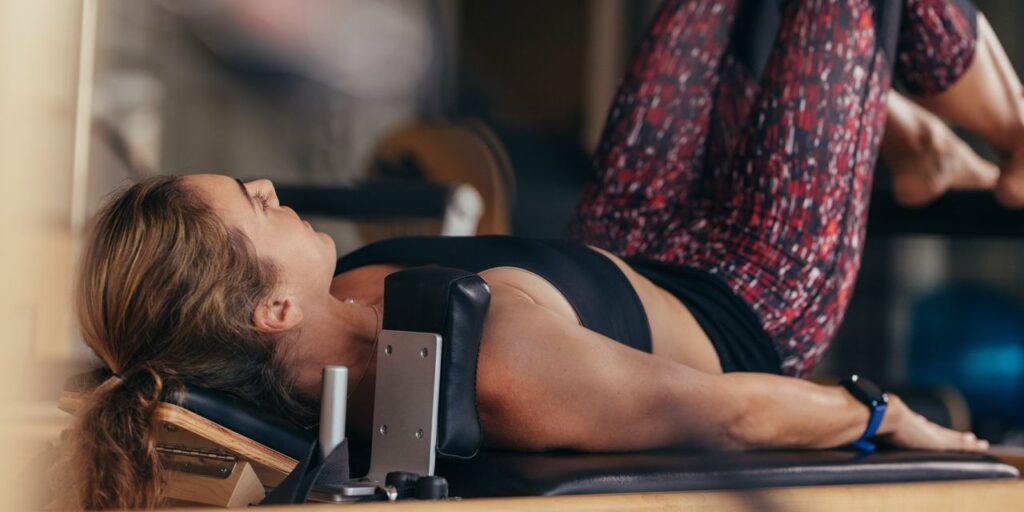Pilates, however, was created by Joseph Pilates in the 1920s under the name Corrective Exercise (fitting, since the method was often used as rehab for dancers) and, later, Contrology, Khetanya Henderson, a classical Pilates instructor and the founder of KKRU Pilates Studio & Wellness in Atlanta, tells SELF. “It’s really this idea that your powerhouse—your core—is the source of all of your strength,” she explains. “And if we can strengthen that, then everything else in the body can unite as one integrated unit.” It’s founded on six principles: control, concentration, centering, precision, breath, and flow, says Henderson.
Out of classical Pilates came plenty of spin-offs, including contemporary, modern, and athletic interpretations, says Henderson. In each classical Pilates class, you’ll go through set exercises in a specific order (the hundred, roll up, roll over, single-leg circle, and so on) on just a mat or a reformer. More contemporary or modern offerings may deviate from that set exercise sequence and incorporate dance-like elements, she says.
2. Equipment
The classic Pilates reformer consists of spring-loaded cables with handles or loops, a carriage with shoulder and head rests that slides up and down the frame, a footbar, and a small platform. In class, participants might sit or lie on the carriage, place their hands or feet in the straps, and perform exercises like leg circles, frog, or teaser, pushing against the springs’ resistance or fighting its pull.
It’s different from the Lagree Megaformer, which, as we mentioned above, was initially derived from the Pilates reformer. To help Megaformer users get into the correct position as quickly as possible (and ensure they’re getting the desired amount of resistance for a given exercise), Lagree says he added numbers, symbols, and lines on the carriage, rails, and platform. There are also handles and multiple anchoring points, dedicated spots to grab with your hands or place your feet during class. As a result, unlike with the reformer, participants have more stability (and peace of mind) while doing complicated balance exercises like the runner’s lunge or bear pike.
It’s important to mention that, while the mat and reformer are most commonly used in group Pilates settings, Henderson says there’s more to it. The method also utilizes apparatuses like the Cadillac, chair, trapeze table, magic circle, foot and toe correctors, and ladder barrel, each of which has its own benefits and can be used in one-on-one sessions.
3. Intended goals
With its focus on control, breath, and the powerhouse core, Pilates aims to support a stabilized spine and proper alignment of the pelvis, hips, and shoulders for improved functioning in your everyday life, says Henderson. It’s an integrated, full-body approach, so there’s an element of mindfulness, too, she notes. “It’s a sandwich of mobility, flexibility, strength, stabilization, breath, mental clarity, mind-body connection,” says Henderson. “It’s like a whole hoagie sandwich of all of it.”
On the flip side, Lagree says his method is based on building muscular endurance through time under tension, or how long your muscles produce force. You’ll spend at least a full minute activating a given muscle group, he notes. Training with more time under tension is not only key to improving your functional fitness (just think about how long your upper-body muscles need to be engaged while you carry your fresh laundry from the laundromat to your apartment) but it can also be an effective strategy for building muscle.
4. Intensity
Both Lagree and Pilates can feel high-intensity, but the experience is totally different.


